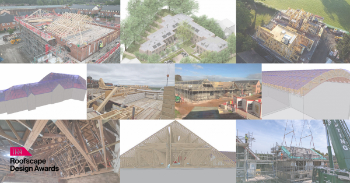BIM market revenue by 2024
The global BIM market was valued at $3.6 billion in 2016, and is projected to reach $18.8 billion by 2024, growing at a compound annual growth rate (CAGR) of 22.9% from 2016 to 2024.
This is according to the report 'Global Building Information Modelling Market, by Solution (software and services), by deployment model (on-premises and cloud), by application area (commercial, industrial, institutional and others), by geography (North America, Europe, Asia Pacific and Rest of World), industry trends Estimation & Forecast, 2016-2024'.
In 2016, the BIM software segment generated the highest revenue share of $2.7 bn, growing at a CAGR of 23.4%. Among major regions, North America is currently leading the BIM market with the revenue of $1.07 bn, however, Europe and Asia Pacific are expected to surpass the North American market by 2021.
According to the report, the emerging countries of Asia Pacific and Europe will experience a steep growth in the BIM market because of infrastructure developments. The rise in population and the requirement for new buildings and structures will lead to a hike in the growth of BIM market in countries such as India and China.
Cloud-based BIM deployment leads the market and is further expected to grow at the highest CAGR of 23.8% during the forecast period.
Cloud-based BIM is a type of software-as-a-service prominent among small and medium sized enterprises, as the prices associated with services, operational costs, licenses and subscription costs, storage, and bandwidth are lower. It is a software licensing and delivery model and is also referred to as on-demand software. These cloud-based versions are beneficial as they are easily available at affordable rates.
North America leads the BIM market with a market share of nearly 35% in 2016, and revenue of $1.07 bn in 2015. Residential and commercial buildings are the major reason for the market growth. Growing awareness about the benefits of BIM among the constructors and contractors in North America is also a key driving factor for the market.
The European market is expected to account for the second largest share during the forecast period. The commercial segment is the largest application area for BIM in Europe, and is expected to grow at the CAGR of 24.4% during the forecast period; however, infrastructure is expected to witness the fastest growth.
Key findings of the report include:
- The market is expected to grow at a remarkable rate due to government initiatives mandating the adoption of BIM software for construction projects.
- The software segment will continue to lead the global BIM market with more than 70% of the total market share.
- The infrastructure segment is expected to grow at the fastest CAGR of 25.2% during the forecast period.
- The cloud-based deployment model is expected to lead the market throughout the forecast period as a result of its cost-effectiveness and easy availability.
In June 2016, Autodesk inc., a major BIM software provider acquired CadSoft Computer GmbH, a Germany based computer-aided design software developing company. This strategic move will help the company to grow more in the field of software development and enhance its existing technology.
Key players in the market include Autodesk, Inc., Trimble Navigation Ltd, Nemetschek AG, Synchro Software Ltd., Bently Systems Inc., Dassault Systemes, Asite Solutions Ltd, Pentagon Solutions Ltd., AECOM.,Beck Technology, Ltd.
[edit] Find out more
[edit] Related articles on Designing Buildings Wiki
Featured articles and news
A five minute introduction.
50th Golden anniversary ECA Edmundson apprentice award
Showcasing the very best electrotechnical and engineering services for half a century.
Welsh government consults on HRBs and reg changes
Seeking feedback on a new regulatory regime and a broad range of issues.
CIOB Client Guide (2nd edition) March 2025
Free download covering statutory dutyholder roles under the Building Safety Act and much more.
AI and automation in 3D modelling and spatial design
Can almost half of design development tasks be automated?
Minister quizzed, as responsibility transfers to MHCLG and BSR publishes new building control guidance.
UK environmental regulations reform 2025
Amid wider new approaches to ensure regulators and regulation support growth.
The maintenance challenge of tenements.
BSRIA Statutory Compliance Inspection Checklist
BG80/2025 now significantly updated to include requirements related to important changes in legislation.
Shortlist for the 2025 Roofscape Design Awards
Talent and innovation showcase announcement from the trussed rafter industry.
OpenUSD possibilities: Look before you leap
Being ready for the OpenUSD solutions set to transform architecture and design.
Global Asbestos Awareness Week 2025
Highlighting the continuing threat to trades persons.
Retrofit of Buildings, a CIOB Technical Publication
Now available in Arabic and Chinese aswell as English.
The context, schemes, standards, roles and relevance of the Building Safety Act.
Retrofit 25 – What's Stopping Us?
Exhibition Opens at The Building Centre.
Types of work to existing buildings
A simple circular economy wiki breakdown with further links.
A threat to the creativity that makes London special.























